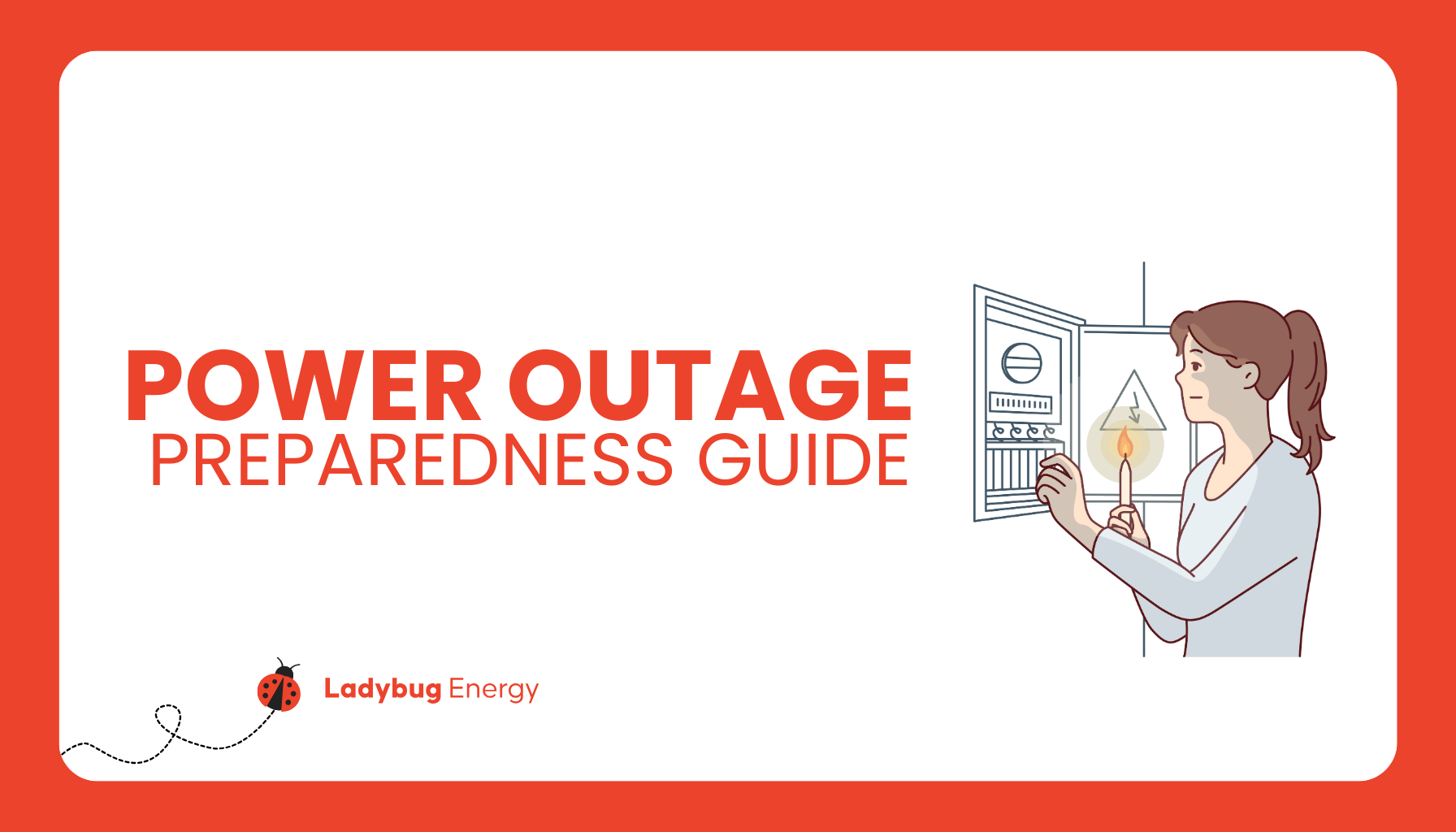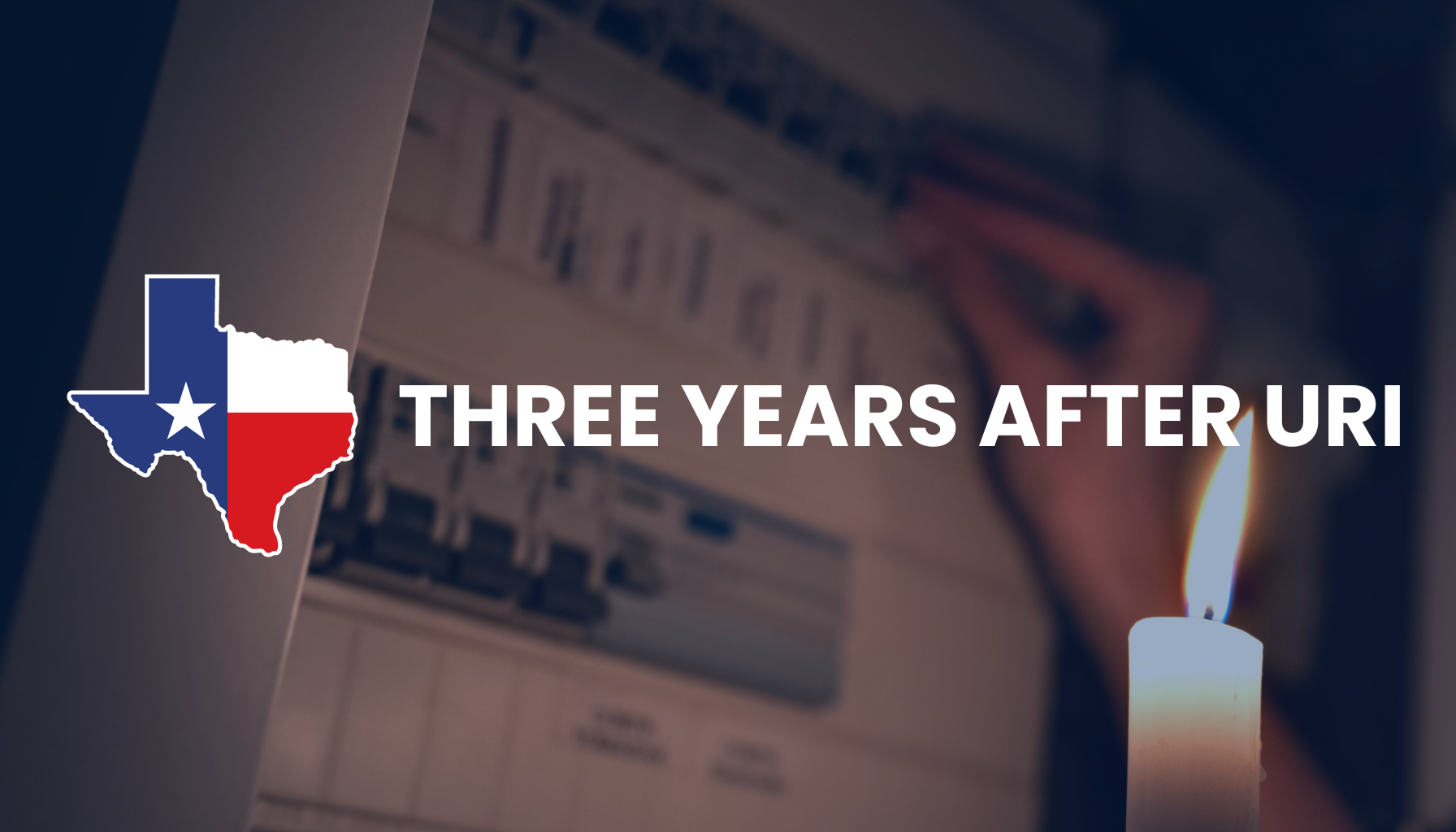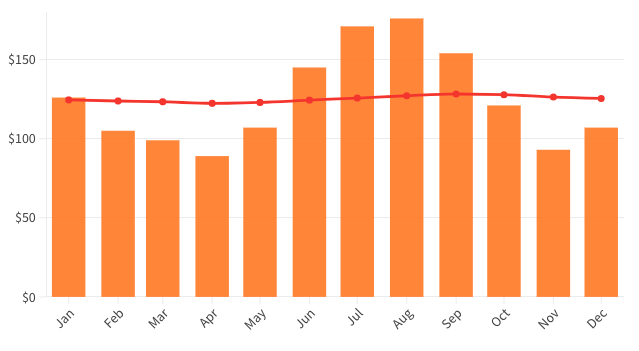
The Rising Popularity of EVs: What It Means for Your Electric Bill
Texas has seen a surge in electric vehicle (EV) adoption over the past few years — and it’s not just happening in Austin or Dallas. From suburban Houston to rural Hill Country, more Texans are making the switch to EVs, driven by a combination of environmental awareness, lower maintenance needs, and financial incentives.
But why now?
One major reason is cost efficiency. Electric vehicles typically cost less to operate than their gasoline counterparts. According to the U.S. Department of Energy, EV owners can save hundreds of dollars annually on fuel alone. Add in fewer oil changes and less engine wear, and the long-term savings become clear.
Texans are also benefitting from state and federal incentives that reduce the upfront cost of EVs. The federal Clean Vehicle Credit offers up to $7,500 for eligible EV purchases, while local utility companies like Oncor and CenterPoint sometimes provide rebates for home charging stations — helping residents offset installation costs. You can find updated federal information on EV tax credits through the U.S. Department of Energy’s website.
Another driving factor is vehicle variety. EVs are no longer just sleek sedans for tech lovers. Brands like Ford, Chevy, and Hyundai now offer electric SUVs and trucks, making it easier for Texans to find an electric option that fits their lifestyle — whether that’s hauling gear for a weekend in Big Bend or just running errands in San Antonio.
As infrastructure improves, with charging stations popping up on highways and in neighborhoods across the state, the convenience gap between gas and electric is narrowing. Texans are discovering that EVs aren’t just eco-friendly — they’re practical, too.
In short, it’s not just about being green anymore. For many Texans, it’s about being smart with energy and money.
How Charging an EV Impacts Your Home Electricity Usage
When you bring home an electric vehicle, you’re not just changing how you drive — you’re also transforming how your home uses electricity. Charging an EV can significantly increase your monthly energy consumption, especially in a state like Texas where many households already rely heavily on air conditioning for much of the year.
The type of charger you use makes a big difference:
- Level 1 Charging uses a standard 120-volt outlet (the kind you plug your phone into). It adds about 3–5 miles of range per hour of charge — which is slow, but may be enough for drivers with short commutes.
- Level 2 Charging requires a 240-volt outlet (like your dryer uses) and can add around 25–30 miles of range per hour. Most EV owners in Texas opt for this faster option, especially in larger households with multiple drivers.
A typical EV requires 30 to 40 kWh to fully charge, depending on the model. For a driver who charges every 3 days, that’s 300–400 kWh per month — on top of your regular household usage. In a state like Texas, where the average residential home uses about 1,200 kWh per month, that can represent a 25–35% increase in electricity consumption.
This additional load not only affects your total monthly bill, but can also push you into a higher pricing tier if your plan includes usage-based pricing. That’s why it’s so important for EV owners to evaluate their electricity plan — many plans are not designed with EV charging in mind.
Timing matters, too. Charging during peak hours (typically late afternoon and early evening) can be more expensive than charging overnight, depending on your plan. Some providers in Texas offer time-of-use plans that incentivize charging when demand is low — a perfect match for EV owners.
Understanding your daily driving habits, how often you’ll need to charge, and what your current electricity plan covers is essential. Otherwise, the money you save on gas could be quietly eaten up by inefficient home energy usage.
The Real Cost: How Much More Will You Pay Each Month?
One of the biggest questions new EV owners in Texas ask is: “How much more will my electric bill go up?” The answer depends on how much you drive, how often you charge, and what type of vehicle and charger you use — but let’s break it down with some realistic scenarios.
On average, charging an EV like a Tesla Model 3 or Ford Mustang Mach-E from empty to full requires 30–40 kWh, which, at a rate of 13¢ per kWh (a common price in deregulated parts of Texas), equates to around $4 to $5 per full charge.
Now consider this:
- A person who drives 1,000 miles/month may charge roughly 300–350 kWh/month.
- At 13¢ per kWh, that’s $39–$45/month just for charging.
That might not sound like much — and it’s still far cheaper than gas — but here’s where context matters:
Example 1: Apartment Dweller in Houston
A single person living in a 700 sq ft apartment might have a monthly bill of $70. Add EV charging and the bill could jump to $110–$120/month — a 60% increase.
Example 2: Family of Four in San Antonio
A 2,500 sq ft home with heavy AC use may already spend $250/month on electricity. Adding 350 kWh of EV charging might raise that to $295–$310/month, depending on the plan.
Example 3: Two-EV Household in Frisco
With two EVs and daily charging, the household may consume an extra 600–700 kWh/month, adding $75–$90 to their bill. That makes picking the right plan even more crucial.
It’s not just the total usage that matters — it’s also when you charge. Many plans charge more during peak hours (like 4 PM to 9 PM). That means charging your car right after you get home could cost you more than charging after midnight.
To save money, Texans are increasingly turning to EV-friendly electricity plans like:
- Free Nights plans, which offer no-cost energy during overnight hours — perfect for EV charging.
- Time-of-Use plans, where electricity is cheaper during low-demand hours.
- 100% Renewable plans, which pair well with EV ownership for a truly green lifestyle.
If you're curious what plans are available in your zip code, you can compare electricity plans and filter by features like contract length, pricing, and usage pattern compatibility.
Ways to Save on Your Electricity Bill With an EV
Owning an EV doesn’t mean your electricity bill has to skyrocket. With a few smart strategies, Texans can charge efficiently and keep their costs under control — even during high-usage months like July and August.
One of the best tips? Take advantage of time-based electricity plans.
Many Texas electricity providers offer Time-of-Use (TOU) or Free Nights and Weekends plans. These plans encourage off-peak usage by lowering rates (or offering free electricity) during specific times, like overnight hours — which aligns perfectly with how most EV owners charge their vehicles. By plugging in after 9 PM and finishing before 6 AM, you could drastically reduce the cost of charging.
Another tip is to use a smart EV charger. These devices allow you to schedule charging times, track your energy usage, and avoid peak pricing periods automatically. Some chargers can even sync with your utility’s pricing updates or weather conditions. A good place to start researching options is this DOE guide to home charging.
Don’t forget to look into rebates and incentives. Some Texas utility companies — like Austin Energy, CPS Energy, and Oncor — offer rebates for installing Level 2 home chargers. Others provide special EV charging programs that deliver discounted rates for EV owners. These savings often go unclaimed simply because people don’t know they exist.
Additional ways to reduce your EV-related electricity costs include:
- Charging during the day if you have solar panels.
- Using apps like ChargePoint or PlugShare to locate free public chargers.
- Avoiding full charges unless necessary — most battery health experts recommend charging to 80% unless preparing for a long trip.
- Comparing plans at least once a year, especially if your driving habits or household energy usage has changed.
Lastly, monitor your monthly kWh usage through your electricity provider’s online dashboard or mobile app. The more visibility you have into your energy habits, the easier it is to adjust them for savings.
Choosing the Right Electricity Plan for EV Owners
Not all electricity plans are created equal — and if you own an electric vehicle in Texas, choosing the wrong one could cost you hundreds of dollars per year. That’s because EVs don’t just add a little to your energy usage — they can transform your home’s consumption profile entirely.
The first step is knowing your charging pattern. Do you charge daily? Only a few times a week? Are you home during the day or mainly at night? These questions help determine which plan structure suits your lifestyle.
Here are the most common types of plans to consider:
- Fixed-Rate Plans: These lock in your electricity rate for 12, 24, or even 36 months. Great for budgeting, but make sure the plan doesn't penalize high kWh usage — which can happen in tiered pricing structures.
- Time-of-Use or Free Nights Plans: These plans incentivize you to shift your usage to off-peak times. If you typically charge overnight, a plan with free nighttime electricity could drastically cut your EV costs.
- 100% Renewable Energy Plans: As an EV owner, pairing your clean ride with a clean electricity source makes environmental and ethical sense. Many providers offer 100% renewable plans — and they often cost about the same as standard options.
- Usage-Based Plans: Some plans offer lower rates only within certain usage bands (like 500–1,000 kWh). EV owners may surpass those limits, making these plans more expensive in practice than they appear.
Make sure to read the Electricity Facts Label (EFL) of any plan you consider. This document outlines the pricing structure, additional fees, and average costs at various usage levels.
Finally, consider the contract length. EV owners who are still adjusting to their new energy usage might prefer shorter contracts while they monitor and learn their new consumption habits. Once you're comfortable, you can lock into a longer-term plan that suits your needs.
Should You Invest in Solar for Your EV?
Pairing an electric vehicle with a home solar system is a natural next step for many Texans looking to maximize savings and energy independence. While the initial investment in solar panels can be significant, the long-term benefits — especially when combined with EV ownership — can make the math work in your favor.
Let’s break it down.
Charging an EV at home increases your electricity demand, often by 25–50% or more, depending on how much you drive. If you’re paying retail rates for that electricity, your bill will reflect it. But with solar, that added usage can be offset by the energy your panels generate — turning your roof into your own EV “fuel station.”
A 6–8 kW solar system is typically enough to cover the needs of an average household, and adding another 1–2 kW can account for EV charging. Depending on your location in Texas, this system can generate anywhere from 10,000 to 14,000 kWh annually, which can easily cover a household and one EV.
Here are a few solar-related incentives and benefits for Texans:
- Federal Tax Credit: As of 2025, the Residential Clean Energy Credit still offers 30% off the total solar system cost, including batteries, through a federal tax credit. Details are available at the U.S. Department of Energy website.
- Net Metering: While Texas doesn’t have a statewide policy, some REPs in deregulated areas offer buyback or net metering programs, giving you credit for the excess solar energy you export back to the grid.
- Increased Home Value: Studies suggest homes with solar panels sell faster and at a premium — especially in areas like Austin, San Antonio, and Plano where energy-conscious buyers are actively looking for these features.
It’s also worth mentioning that adding battery storage, while optional, allows you to store solar energy and use it overnight or during grid outages — perfect if you want to charge your EV after sunset or be more resilient during Texas’s unpredictable weather events.
Still, solar isn’t for everyone. Upfront costs can run between $15,000–$25,000, even after incentives, and not all roofs are ideal for panel placement. That’s why many Texans start by shopping for renewable energy plans before jumping into solar ownership. It’s a simpler, cost-effective way to support green energy and reduce emissions without installation.
Tips for First-Time EV Owners in Texas
Owning an electric vehicle in Texas brings a new level of convenience, but it also requires a shift in mindset — especially if you’re used to gas stations and oil changes. Here are a few practical tips to help you hit the ground running as a first-time EV owner:
1. Understand Your Charging Options
Get familiar with the different levels of charging. Most EV owners install a Level 2 charger at home for faster charging, but you’ll also want to know where public chargers are near your workplace, gym, or grocery store. Apps like PlugShare, ChargePoint, and Electrify America can help you find stations, check availability, and even see current pricing.
2. Know Your Local TDU
In Texas’s deregulated energy market, the company you pay for electricity isn’t the same one maintaining the lines and responding to outages. That’s the job of your Transmission and Distribution Utility (TDU), such as Oncor, CenterPoint, or AEP Texas Central. Know who services your area — they’ll be the ones restoring power during storms or grid interruptions.
3. Be Strategic With Charging
Texas summers can strain the power grid, especially in the late afternoon. If your plan has variable pricing, avoid charging your EV during peak demand times (usually 4 PM–9 PM). Schedule overnight charging or charge during solar peak hours if you have panels at home.
4. Use Your Vehicle’s Tech
Most EVs come with mobile apps that let you monitor charging, schedule sessions, and even precondition your cabin while still plugged in. Learning how to use these tools not only saves you money but also extends your battery’s lifespan.
5. Watch Out for “Range Creep”
Many new EV owners worry about range at first — but in reality, most drivers only travel 30–40 miles per day. Try not to overcharge or stress about 100% range unless you're planning a road trip. Battery health is best maintained between 20% and 80% charge for daily use.
6. Keep an Eye on Plan Compatibility
Your energy usage is about to change dramatically. Track your monthly kWh increase and reassess your electricity plan within the first three months of EV ownership. You can compare energy plans designed for high-usage homes, free nights, or renewable sources that better match your new lifestyle.
Whether you're driving a Rivian, a Tesla, or a plug-in hybrid, these small habits can make a big difference in your monthly costs and long-term EV experience.
Electric vehicles are changing the way Texans drive — and the way we use electricity at home. With the right plan, smart charging habits, and an eye on efficiency, you can keep your monthly bill in check while enjoying the benefits of cleaner, low-maintenance transportation. Whether you're charging overnight, exploring renewable energy options, or just watching your kWhs more closely, owning an EV is your chance to drive into a future that’s not only greener — but smarter and more cost-effective, too.

July 4, 2025
Energy Independence Starts at Home: 4 Ways to Declare Your Personal Freedom from High Bills This Fourth of July

June 20, 2025
How Smart Home Security Systems Affect Your Energy Usage

June 13, 2025
The Smart Texan’s Guide to Beating the Heat: Budget-Friendly Home Upgrades

June 3, 2025
Hurricane Season in Texas: How to Prepare for Power Outages

May 29, 2025
No AC? No Problem: How to Stay Cool During a Heatwave Without Air Conditioning

May 27, 2025
Battery Storage at Home: Are They Worth It?

May 23, 2025
Record May Heat in Texas 2025: What It Means for Your Summer Energy Bills

May 16, 2025
Beat the Texas Heat: Summer AC Hacks That Save Money

April 17, 2025
The Truth About Phantom Loads: How Standby Power Is Draining Your Wallet

April 4, 2025
How to Perform a DIY Home Energy Audit and Cut Your Utility Bills

March 31, 2025
Smart Tips to Lower Your Electricity Bill

March 18, 2025
Green Energy 101: Decoding Renewable Electricity Plans

March 14, 2025
Upgrading to a Smart Thermostat: Why You Should Do it and What You Need to Know

February 24, 2025
Power Play: A Step-by-Step Guide to Estimating Your Home's Electricity Usage

February 3, 2025
How Weather Impacts Energy Prices: Understanding the Connection

January 22, 2025
The Datacenter Boom in Texas: Impact on Consumers and Energy Markets

January 21, 2025
How to Lower Your Electricity Bills and Save Big

January 17, 2025
Everything you need to know about Texas Retail Electric Providers (REPs)

December 23, 2024
10 Common Energy and Electricity Myths Debunked

December 18, 2024
How the Texas Electric Grid Works: Key Differences and Insights

December 13, 2024
Smart Plugs Explained: The Ultimate Guide

December 4, 2024
Winter Energy Savings: Tips to Lower Your Electricity Bill

November 27, 2024
Your Power To Choose: Setting Up Electricity Service and Switching Providers in Texas

September 24, 2024
Understanding Electricity Deposits: Why They Exist and How to Avoid Them

February 26, 2024
Power Outage Preparedness: A Complete Guide

February 9, 2024
Three Years After Uri: How Texans Can Help Prevent Future Power Outages

January 11, 2024
Best Energy Saving Devices for Your Home: From Smart Tech to LED Bulbs

November 28, 2023
How to Read an Electricity Facts Label (EFL)

September 12, 2023
How Long Can a Landlord Leave You Without Electricity: What Tenants and Landlords Need to Know

August 21, 2023
Childproofing Electricity: A Parent's Guide to Safeguarding Kids from Electrical Dangers

July 19, 2023
Does Closing Off Rooms Save Heat? An Energy Efficiency Discussion

July 19, 2023